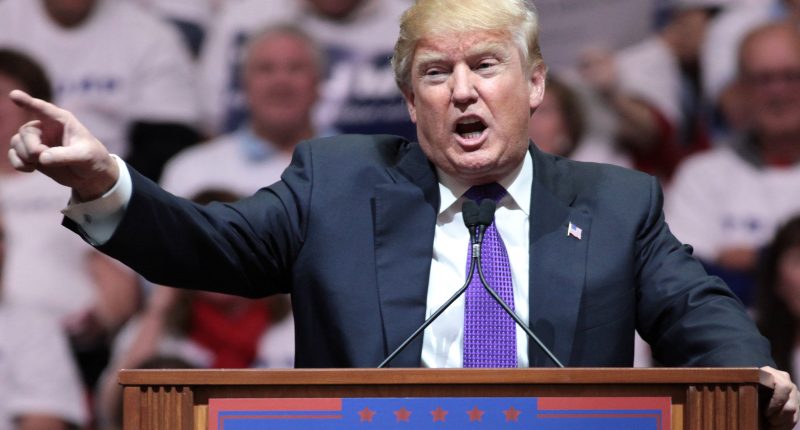The tech world — or easy to say the entire global trade order — is set for another jolt, as US Prez Donald Trump is bringing an additional 50% tariff on Chinese imports if Beijing fails to withdraw its latest round of retaliatory tariffs by April 8. The new tariffs, set to take effect on April 9th, are in response to China’s decision last week to levy a 34% increase in duties on U.S. goods.
“Yesterday, China issued Retaliatory Tariffs of 34%, on top of their already record setting Tariffs, Non-Monetary Tariffs, Illegal Subsidization of companies, and massive long term Currency Manipulation, despite my warning that any country that Retaliates against the U.S. by issuing additional Tariffs, above and beyond their already existing long term Tariff abuse of our Nation, will be immediately met with new and substantially higher Tariffs, over and above those initially set,” Trump wrote in a post on Truth Social. “Therefore, if China does not withdraw its 34% increase above their already long term trading abuses by tomorrow, April 8th, 2025, the United States will impose ADDITIONAL Tariffs on China of 50%, effective April 9th. Additionally, all talks with China concerning their requested meetings with us will be terminated! Negotiations with other countries, which have also requested meetings, will begin taking place immediately,” Trump declared in the post.
The announcement triggered immediate turmoil across global financial markets. U.S. stocks opened sharply lower on Monday, with the Dow Jones Industrial Average plunging 1,363 points amid fears of an all-out trade war. This marked the third consecutive session of heavy losses for Wall Street, wiping out gains made earlier this year. Asian markets were hit even harder overnight, with indices in Singapore, Japan, Australia, South Korea, and India all suffering steep losses. India’s benchmark indices fell by nearly 5%, while the offshore Chinese yuan dropped more than 0.5% following Trump’s announcement. Japanese Prime Minister Shigeru Ishiba reportedly agreed in a phone call with Trump to hold Cabinet-level negotiations regarding the U.S.’s proposed 24% tariff on Japanese exports.
Trump’s latest threat comes on top of a growing list of tariffs already imposed on Chinese imports. Earlier this year, the former president introduced a 20% tariff linked to China’s alleged role in fentanyl trafficking. This was followed by a 34% tariff aimed at addressing broader trade disputes. Should the new 50% tariff take effect, the total levies on certain Chinese goods could skyrocket to as high as 104%, potentially doubling the price of imported items from the U.S.’s third-largest trading partner.
An additional tariff would exacerbate concerns with the technology sector as well, which has already seen falling stocks over the past week. For one, it would lead to increased supply chain disruptions and increased production costs for tech companies heavily reliant on manufacturing in China. Wedbush analyst Dan Ives informed in a client note that the “tariff economic Armageddon unleashed by Trump is a complete disaster for Apple given its massive China production exposure. In our view, no U.S. tech company is more negatively impacted by these tariffs than Apple with 90% of iPhones produced and assembled in China.”
The feasibility of relocating supply chains to the US is a daunting challenge (both financially and logistically), while tariffs on imported components are expected to drive up costs for data centers. This would, in turn, impact cloud providers like Amazon, Microsoft, and Google, and potentially slowing AI adoption due to increased prices of AI chips from Nvidia and AMD. So far, US tech stocks are dropping rapidly, with the likes of Nvidia, Apple, Microsoft, Alphabet, Amazon, and Meta already losing more than $1.8 trillion in market value over the past week (and considering the latest development, things do not seem to be changing anytime soon.
The Tech Portal is published by Blue Box Media Private Limited. Our investors have no influence over our reporting. Read our full Ownership and Funding Disclosure →






